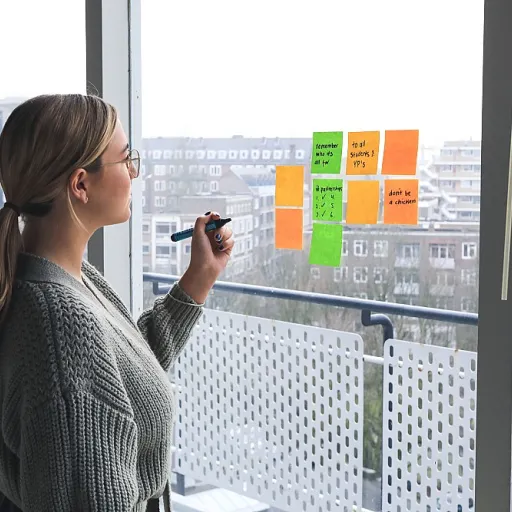Understanding the Current Accounts Payable Landscape
Current Challenges and Opportunities
Understanding the current accounts payable landscape is essential for any business looking to enhance efficiency. The traditional accounts payable process often involves a lot of manual data entry, leading to errors and time-consuming tasks. Companies are still using manual processes to handle purchase orders and invoice processing, which not only delays payments but also impacts cash flow and supplier relationships.
The manual handling of invoices can result in inaccuracies in invoice data and compliance issues, which are costly for businesses. Moreover, managing communication and approvals within teams without automation can hinder the entire process. Organizations are beginning to realize the value of process transformation by adopting payable automation and leveraging digital transformation strategies.
The Need for a Transformation Roadmap
To move away from manual accounts payable processes, it's crucial for companies to start on a transformation roadmap that taps into automation software and digital solutions. This strategy can improve invoice capture and processing, allowing for real-time financial data insights. Implementing digital solutions not only enhances efficiency but also allows teams to focus on strategic decision-making rather than mundane data tasks.
As businesses face increasing complexities around payments and compliance, the need to modernize accounts payable becomes even more pressing. By understanding the state of your current processes and identifying bottlenecks, you set the stage for an effective transformation. Transforming your accounts payable isn't just a technological upgrade; it’s a step towards greater financial health and growth.
For additional insights into measuring efficiency in business management practices relevant to UK companies, see how key indicators can drive improvements
here.
The Importance of Streamlining Accounts Payable
Why Streamlining Accounts Payable is Crucial
In today's fast-paced business environment, the efficiency of accounts payable processes is more important than ever. Manual processes and data entry are not only time-consuming but also prone to errors. With businesses striving for better cash flow management and supplier relationships, streamlining these processes has become essential.
Employing automation and digital transformation in accounts payable can significantly enhance accuracy by reducing manual interventions. Automation software can process invoices, capture invoice data, and manage purchase orders in real-time. This minimizes delays in payments, improving compliance and maintaining healthy supplier relationships.
Implementing a streamlined, digital accounts payable system opens avenues for real-time processing, enabling businesses to maintain more precise financial records. Teams can focus on strategic tasks rather than manual data entry, enhancing overall productivity.
Moreover, a well-planned transformation roadmap can ensure that accounts payable processes are not only efficient but also scalable. This can position companies to better handle future transformations in financial processes, ultimately driving business growth.
For more insights, consider exploring the role of the first line of defense in risk management, which complements effective payable management by safeguarding the financial wellbeing of a company.
Embracing Technological Advancements for Process Optimization
In the evolving landscape of accounts payable, adopting technology can significantly enhance operational efficiency. The shift from manual processes to automation has become essential for teams aiming to optimize invoice processing and payment procedures. Through digital transformation, businesses can improve the accuracy of invoice data and reduce processing times.
Automation software plays a vital role in transforming accounts payable processes. By leveraging such tools, companies can streamline data entry, ensure timely payments, and maintain accuracy in purchase orders. The result is a more efficient payable process that diminishes errors often associated with manual data handling and strengthens supplier relationships.
Additionally, utilizing real-time data allows for better financial decision-making and enhanced cash flow management. Instant access to invoice data and payment statuses can help build a comprehensive transformation roadmap tailored to the specific needs of the business. This proactive approach encourages compliance with financial regulations and fosters smoother interaction with suppliers.
Ultimately, this technological leap is not merely about replacing manual tasks; it is about paving the way for a transformative approach that aligns accounts payable with broader business objectives. The impact of this shift not only improves internal processes but also bolsters external relationships with suppliers and vendors.
Best Practices for Implementing Change
{"
Strategies for Implementing Accounts Payable Changes
Modifying the accounts payable process requires careful planning and execution. To ensure the transition is smooth and efficient, businesses should consider several essential strategies. These practices not only facilitate the transformation but also help in maintaining compliance and strengthening supplier relationships.
- Comprehensive Evaluation: Start by assessing the current manual processes. Identify bottlenecks such as manual data entry and invoice processing that are prone to errors and time-consuming. Understanding these will provide a clearer picture of where automation and digital transformation can have the most impact.
- Create a Roadmap: Develop a detailed transformation roadmap. Outline each step required for implementing accounts payable automation. This plan should include elements like digital processes, payable digital tools, and a timeline for transitioning from manual to automated systems. Incorporate feedback from financial teams and ensure all stakeholders are on the same page.
- Automation Software Implementation: Selecting the right automation software is crucial. Ensure it integrates seamlessly with existing systems and enhances real-time invoice capture and processing abilities. Investing in high-quality payable automation software can significantly lighten the workload on accounts payable teams.
- Training and Support: Transitioning to automated systems demands training for the personnel involved. Equip your teams with the necessary skills and knowledge to handle the new technology efficiently. Provide ongoing support to facilitate adaptation and minimize resistance to change.
- Maintain Supplier Communication: During the transformation period, it is vital to maintain open lines of communication with suppliers. Notify them of any changes to the payable process that might affect payment schedules. This transparency helps in avoiding misunderstandings and supports stronger supplier relationships.
- Monitor and Adjust: After implementation, continually monitor the new accounts payable process. Collect data to evaluate its impact on efficiency, compliance, and cash flow management. Be ready to make adjustments where necessary to optimize the process further.
By following these strategies, businesses can successfully transition to an enhanced accounts payable process. The shift not only improves operational efficiency but also supports financial health and business growth.”}Real-Life Examples of Accounts Payable Transformation
In the journey to enhance efficiency in accounts payable, nothing speaks louder than real-world success stories. Organisations across industries have embraced technological advancements to streamline their accounts payable processes, yielding remarkable outcomes in efficiency, compliance, and supplier relationships.
One prominent example involves a large retail company that drastically reduced its manual processes by automating invoice capture and processing. By implementing advanced automation software, the company successfully eliminated manual data entry, leading to fewer errors and speedier invoice processing. The result? Improved cash flow and stronger supplier relationships, as payments were consistently processed on time.
Another case highlights a financial services firm that implemented a comprehensive digital transformation roadmap for its accounts payable operations. The transformation was focused on leveraging real-time data analytics to provide better insights into the payment process. By digitising purchase orders and creating a seamless interface for invoice processing, the firm significantly reduced processing time and built a more resilient and responsive payables framework.
Furthermore, a manufacturing company has successfully shifted to digital transformation accounts model, integrating real-time invoice data and automation software. This process transformation not only minimised payment delays but also enhanced compliance with regulatory standards, ensuring accurate and timely invoices handling.
The takeaway from these success stories is clear. Through a strategic approach to payable transformation, businesses can realise substantial improvements in their payment processes. Implementing change doesn't just boost internal efficiencies; it strengthens supplier relationships, optimises financial operations, and positions the company for future growth opportunities in the realm of accounts payable management.
To learn more about the importance of streamlining processes, visit
optimising processes through advanced systems.
Future Trends in Accounts Payable Management
Embracing the Future of Accounts Payable
As the landscape of accounts payable continues to evolve, embracing future trends is crucial for businesses looking to enhance efficiency and maintain a competitive edge. Companies are increasingly recognizing the imperative need to streamline their processes, and the shift towards digital transformation is at the forefront of this evolution.
One significant trend is the integration of automation in accounts payable. Automation software is expected to further reduce the reliance on manual data entry, allowing teams to focus on more strategic tasks. This not only minimizes errors but also accelerates payment processing, ensuring timely invoice payments and improved cash flow management. By automating routine tasks, businesses can allocate their resources more efficiently.
Real-time data analytics is another promising trend that can redefine how businesses handle invoice data and processing. By leveraging comprehensive data analytics, companies can gain valuable insights into their financial practices, enhancing compliance and optimizing their payable process. This data-driven approach aids in identifying any bottlenecks and facilitates more effective decision-making.
As organizations move towards fully digital processes, the role of cloud-based solutions becomes increasingly significant. Cloud technologies offer scalability, real-time updates, and enhanced security measures, supporting a more agile accounts payable structure. This transition additionally encourages a collaborative approach, enhancing supplier relationships through better visibility and more streamlined communication methods.
The rise of artificial intelligence (AI) and machine learning is set to transform accounts payable processes even further. These technologies can predict trends, automate invoice capture, and streamline purchase orders, offering more personalized data-driven strategies for businesses. AI can improve supplier payment schedules by analyzing payment history and predicting cash flow needs.
In paving a path for accounts payable transformation, a well-structured transformation roadmap is essential. A successful roadmap integrates technology, process enhancement, and culture shifts within the teams. By anticipating these future trends and developing adaptable strategies, businesses can nurture an environment driven by innovation, efficiency, and long-term growth in their financial operations.














